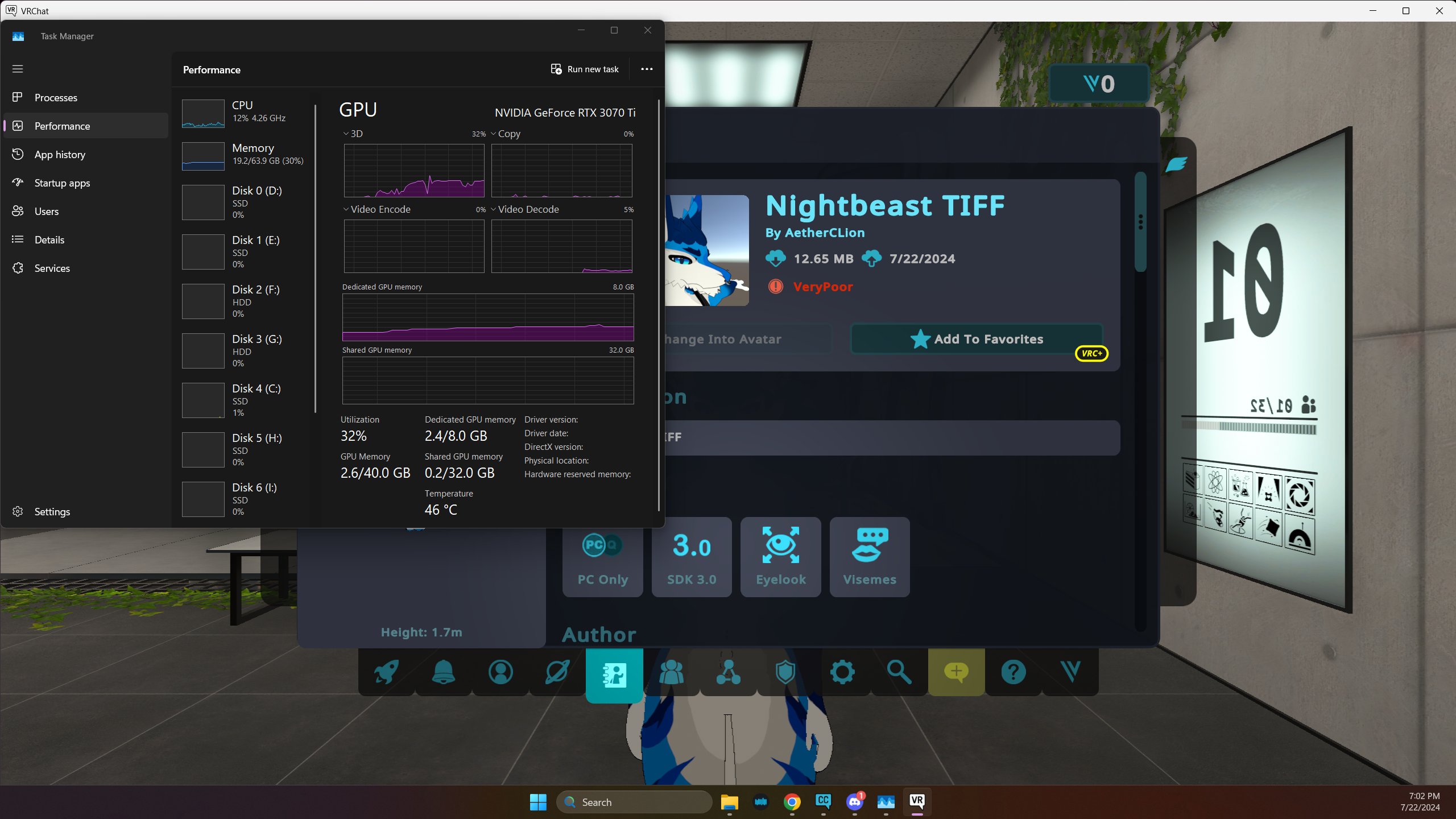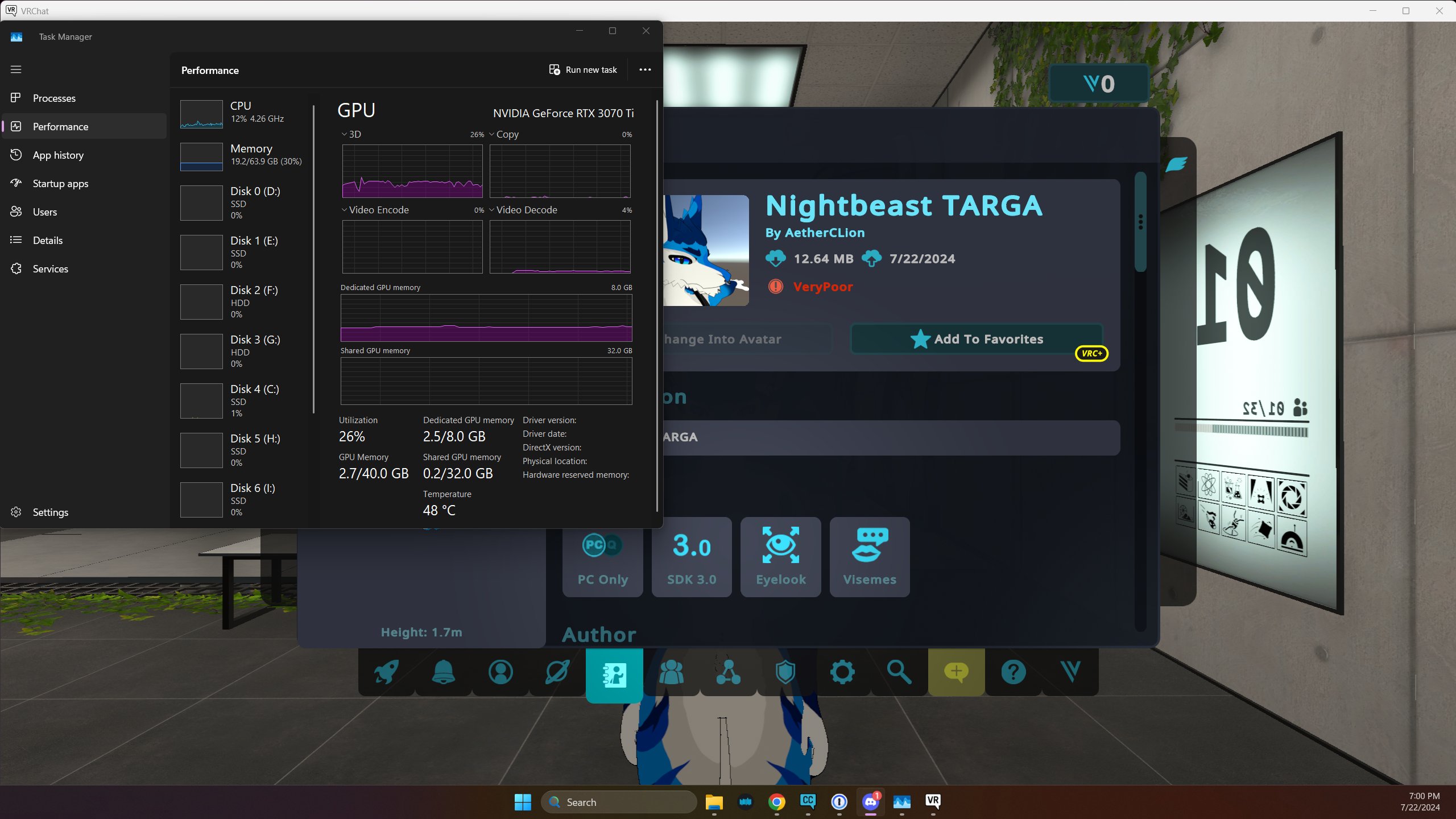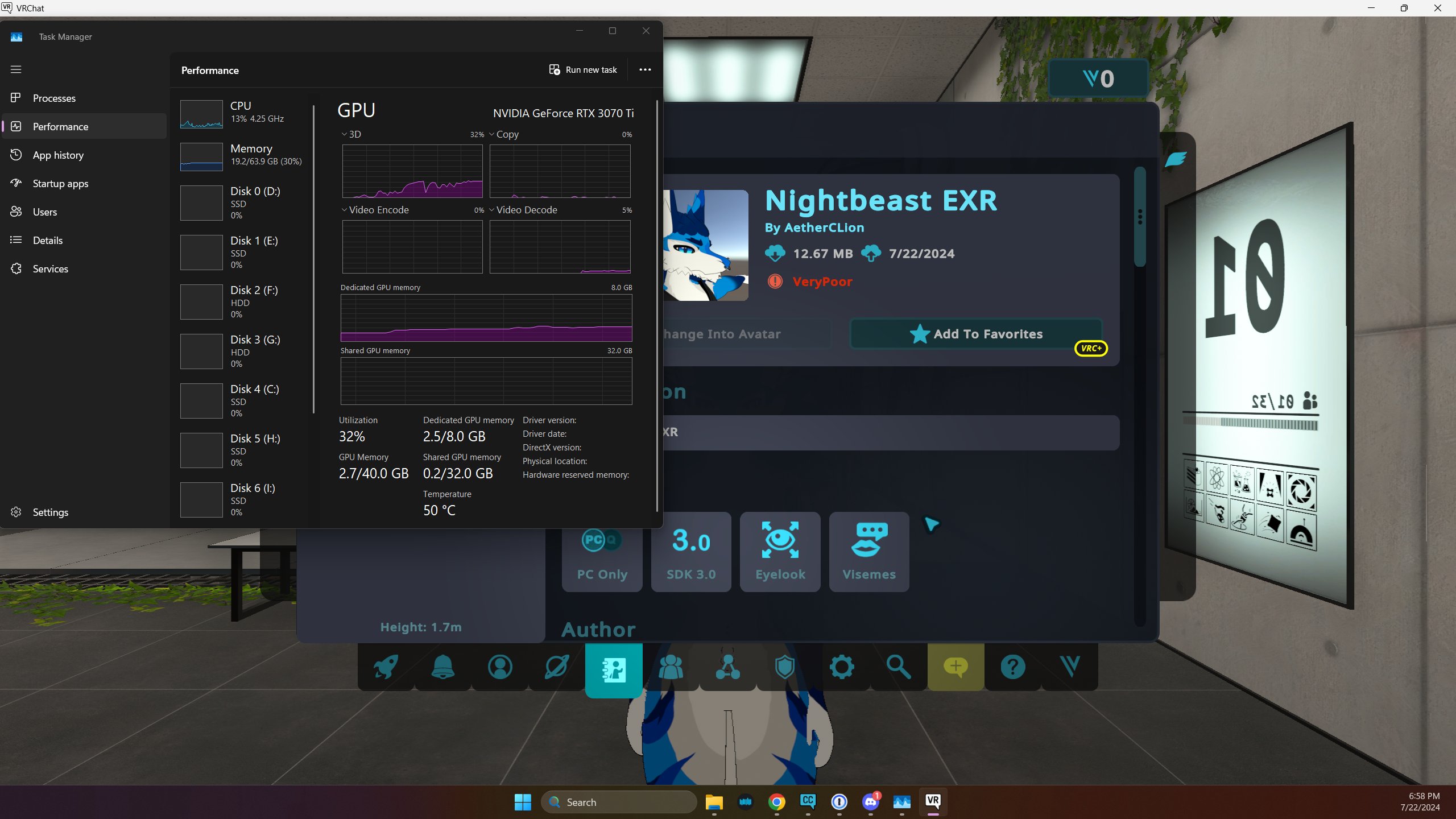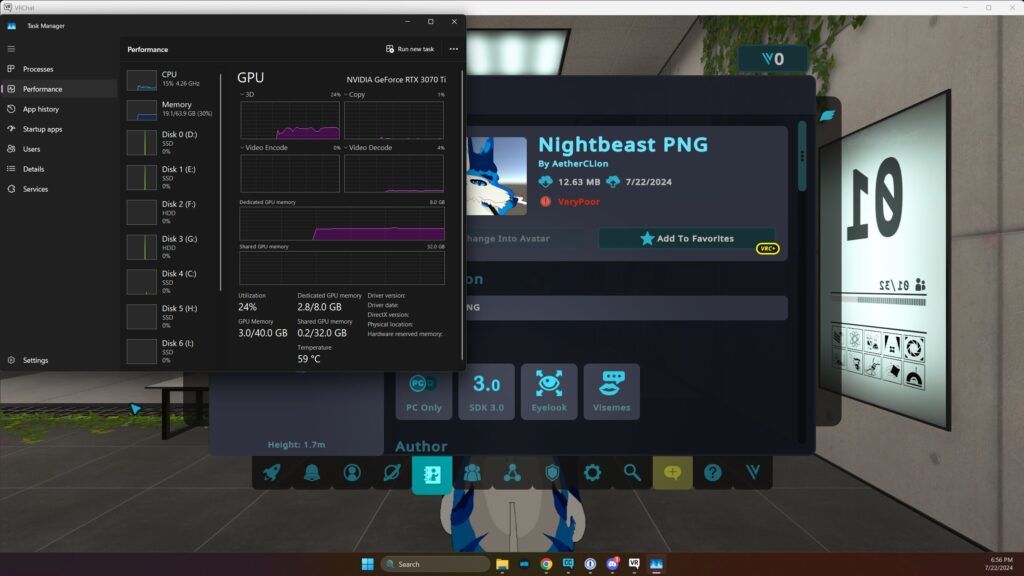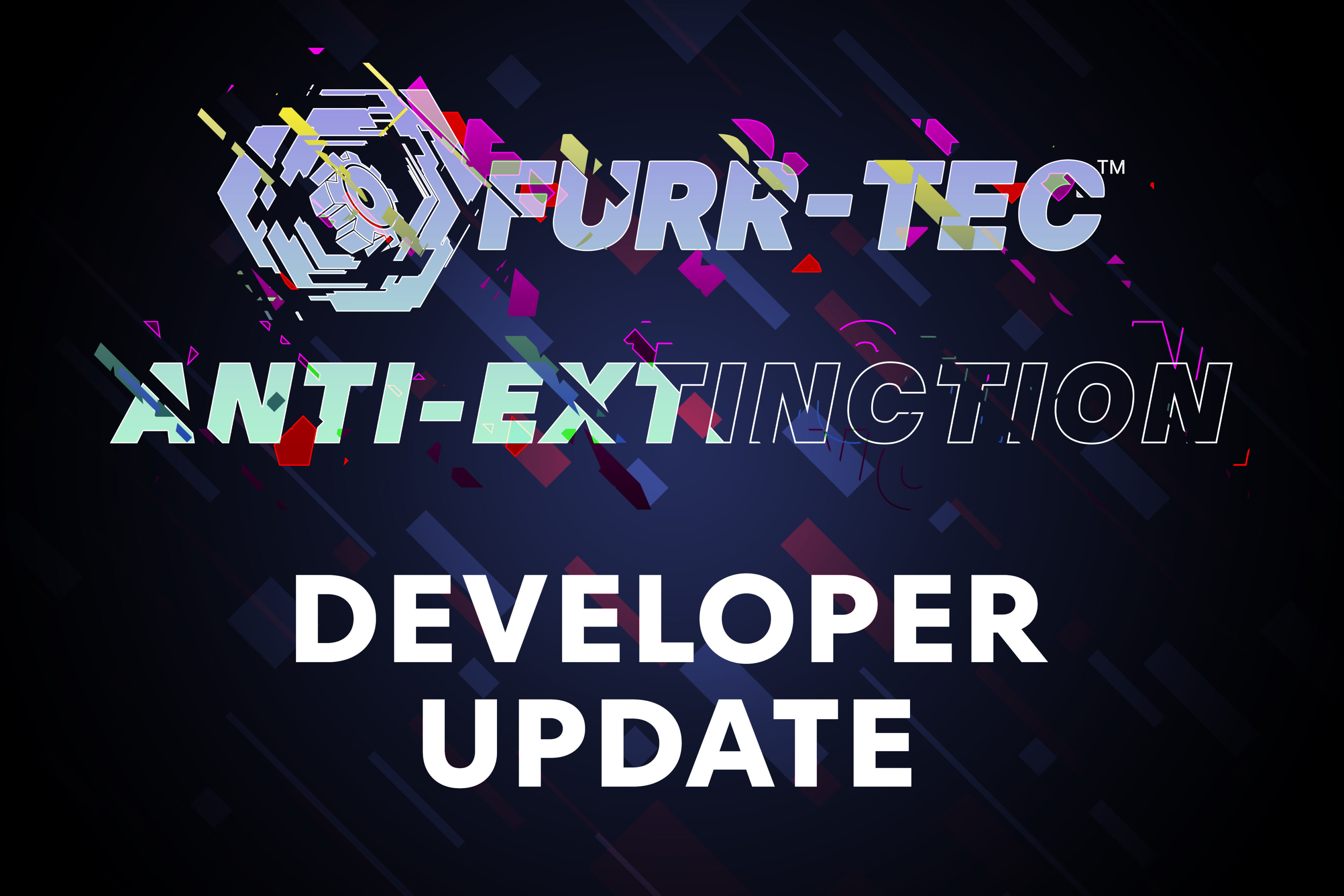Introduction
This document provides an in-depth analysis of our recent migration to EXR, HDR, and TIFF textures, driven by the need to enhance visual quality, optimize performance, and future-proof our assets. Additionally, it summarizes our findings on the impact of various texture formats on VRAM usage within VRChat, a key consideration for both performance and visual fidelity.
Motivation for Migration
High Dynamic Range (HDR) Support
The migration to EXR, HDR, and TIFF formats is motivated by the need to support High Dynamic Range (HDR) content, which allows for a broader range of luminance and color. This transition is crucial for creating realistic lighting and shadow effects, particularly in immersive environments where dynamic lighting plays a pivotal role.
Precision and Flexibility
EXR and TIFF formats offer superior bit-depth compared to traditional formats like JPEG or PNG, ensuring that even the most subtle details in textures are preserved. This is particularly important for maintaining asset integrity across different lighting conditions and hardware configurations, which is increasingly relevant in both gaming and virtual reality applications.
Future-Proofing
With the ongoing advancement of display technologies, particularly in HDR displays like HDR10+, Dolby Vision, and beyond, adopting formats like EXR and TIFF ensures that our assets are ready for the next generation of visual technologies. This migration also aligns with industry standards, ensuring compatibility with leading game engines like Unity and Unreal Engine, and modern production pipelines.
Findings on Texture Formats
VRAM Usage Testing
To understand the impact of various texture formats on VRAM usage within VRChat, extensive testing was conducted. Below is a summary of the findings:
- TIFF: 2.4 GB
TIFF files provide high-quality images with minimal VRAM usage, making them an efficient choice for high-fidelity textures. - DDS: 2.5 GB
DDS is known for its efficient compression, striking a balance between image quality and performance, with slightly higher VRAM usage than TIFF. - TGA: 2.5 GB
TGA is a simple, uncompressed format, offering predictable performance but without the benefits of compression, resulting in similar VRAM usage to DDS. - EXR: 2.5 GB
EXR is ideal for HDR textures due to its high precision and dynamic range, and it also maintains minimal VRAM impact, similar to DDS and TGA. - PNG: 2.8 GB
PNG uses lossless compression, resulting in higher VRAM usage. It is best suited for scenarios where maximum image quality is required, but it should be used selectively to manage VRAM efficiently.
Key Takeaways
- TIFF and DDS: These formats are optimal for balancing quality and VRAM efficiency, making them ideal for both general and performance-critical applications.
- TGA: While uncompressed, TGA provides predictable performance and is suitable where compression is not desired or necessary.
- EXR: Excels in high-fidelity and HDR applications, making it the format of choice for HDR textures.
- PNG: Should be used selectively due to its higher VRAM demands, reserved for cases where lossless quality is paramount.
Optimization Strategies
Mipmapping and Virtual Texture Streaming
To manage VRAM effectively, especially when using high-resolution textures, we recommend leveraging Unity’s mipmapping and virtual texture streaming features. These technologies allow for efficient VRAM usage by streaming in textures dynamically based on the camera’s distance from objects, ensuring high-resolution textures are used only when necessary. This approach enables the use of higher-quality textures without significantly impacting performance, which is crucial in both standard and VR applications.
